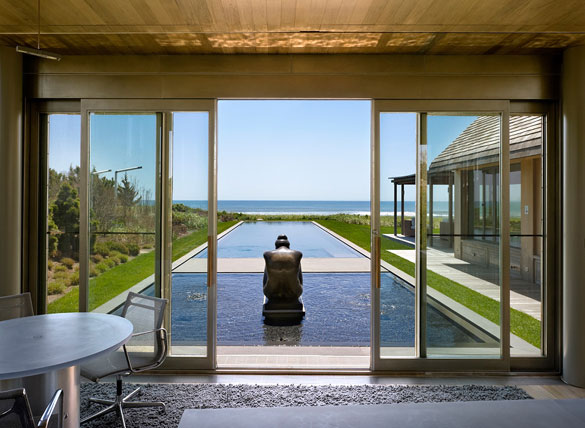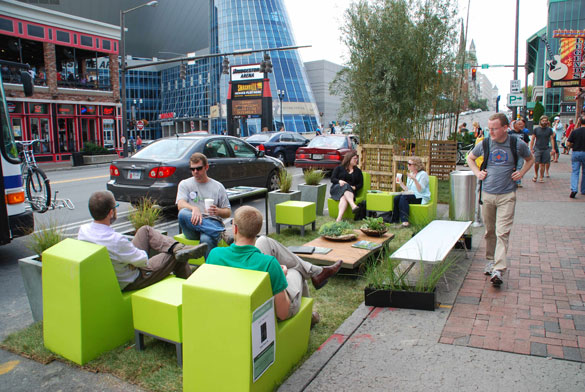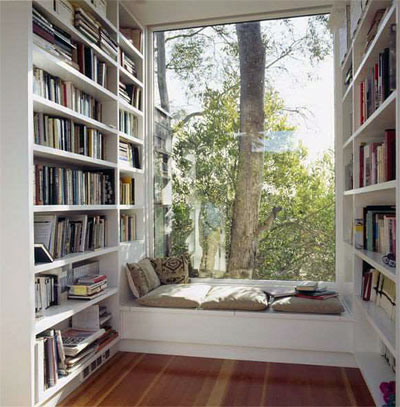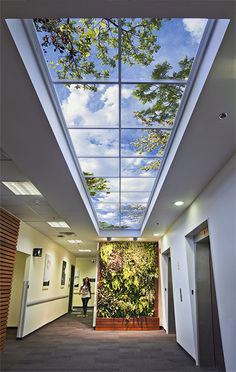 Nature in space. Courtesy photo
Nature in space. Courtesy photo Smart Design With Suzette
Smart Design With SuzetteHave you heard of Biophilic Design? The term “biophilia” literally means “love of life or living systems.” That sounds good, right?
Not to be confused with a specific “natural” or “organic” aesthetic, biophilic design is a design method with proven benefits for human performance and well-being.
Biophilic design can reduce stress, enhance creativity and clear thinking, improve our well-being and expedite healing. I’m in!
 An outdoor green space. Courtesy photo
An outdoor green space. Courtesy photoBiophilia is a term popularized by Harvard University myrmecologist (study of ants, a branch of entomology) and conservationist E.O. Wilson. He used it to describe the extent to which humans are hard-wired to need connection with nature. To most people “nature” means a park or forest, but the weather and animals are also important elements.
Since biophilia refers to our innate biological connection with nature, it helps explain why crackling fires and crashing waves captivate us; why a garden view can enhance our creativity; and why animal companionship and strolling through a park have restorative, healing effects.
Scientists are well aware that time spent outdoors has a calming effect. The emotional and psychological benefits of nature are impressive (research shows its ability to reduce stress, to aid recovery from illness, to enhance cognitive skills and academic performance, to aid in moderating the effects of ADHD, autism and other child illnesses).
With this information, we realize the need for biophilic workplaces, for healing gardens and spaces in hospitals, and for homes and apartments that provide abundant daylight, natural ventilation, plants and greenery.
Biophilic design recognizes:
- To reach our creative potential we need sensory stimulation.
- To heal faster we need natural light.
- To learn better we need exposure to order and complexity.
But you don’t have to be in the forest for these effects to take hold: neuroscientists have found that views of natural scenes can do the same.
 A refuge nook. Courtesy photo
A refuge nook. Courtesy photoBiophilic design involves three concepts:
- Nature In The Space – A visual connection with nature (through windows, natural flow of water, animals, koi pond or aquarium, green wall, art work with nature scenes, designed landscapes, etc.); Non-visual connection (fragrant flowers, songbirds, rain, wind, textured materials, crackling fire, nature sounds, music, etc.); Airflow; Sensory stimuli (like a breeze billowing fabric curtains); Presence of water (seeing, hearing or touching water); Light (day light, fire light, moon light, star light, task lighting, accent lighting, etc.)
- Natural Analogs – Patterns found in nature (décor fabrics, wallpapers, wood work, masonry, etc.)
 Transparent ceiling. Courtesy photo
Transparent ceiling. Courtesy photo
Nature Of The Space – Prospect (unimpeded view, transparent materials, cat walks, balconies, open floor plans); Refuge (a place to withdrawal – reading nooks, bay window seats, gazebos); Mystery (a place that draws you in through winding paths, scent, activity, artwork, etc.); Risk/Peril – a space that feels exhilarating and maybe a little dangerous (cat walks, cantilevers, infinity edges, façade with floor to ceiling transparency, transparent railing).
Design that reconnects us with nature – biophilic design – is essential for providing people opportunities to live and work in healthy places and spaces with less stress and greater overall health and well-being. U.S. businesses lose billions of dollars each year on lost productivity due to stress-related illnesses. This method of design can alter that. It’s very exciting to think about.
Frank Lloyd Wright got it right. What was called “organic architecture” was really biophilic design.
For a quick view of biophilic design visit this website for a two minute video…
http://www.biophilicdesign.net/film-trailer.html
Feel free to contact Los Alamos Interior Designer Suzette Fox to suggest specific design topics or for help with your home. For more information, find her on Facebook at facebook.com/SuzetteFoxInteriorDesign and on her website www.suzettefoxinteriors.com.

